Pre-Launch and Post-Launch App Marketing Guide

You may have a lot of questions, especially if you are a first-time entrepreneur. How do I start marketing my app? What is the most effective way to acquire users?
There is a lot to think about, but don’t pull your hair out just yet.
In this article, I’ll guide you through proven and successful pre and post-launch marketing strategies that you can start implementing today!
Why Market an App Pre-Launch?
With over 4 million apps available on the Apple App Store and Google Play Store combined, your new app is likely to face some stiff competition. The rapid increase in demand for mobile apps is showing no signs of slowing down either, and by 2020 it’s anticipated that global app revenue will hit $188 billion. As such, advertisers are predicted to spend up to $64 billion dollars in mobile app marketing campaigns to get a piece of that $188 billion dollar pie.
If you want to earn yourself a slice of that revenue too, you need to work on building a relationship with potential users by leveraging brand awareness, value and trust.
Many business owners mistakenly believe that this is a process that begins post-launch. But there is actually quite a bit that can be done while your developers are still hard at work creating your product.
Here are some awesome marketing strategies and tactics you can deploy while your app is in development.
Pre-Launch Mobile App Marketing Research
Mobile app marketing is a delicate balance of science and creativity.
There is no point in making a visually spectacular video advertisement if it doesn’t resonate with your target audience. Conversely, marketing collateral can become very uninspiring if the focus is purely on data.
The first step towards achieving a balance between science and creativity is to take the time to thoroughly research your market or industry. Find out what appears to be the most effective for your current competitors and observe what is not working so well so you can avoid pouring time and effort into ineffective strategies.
Knowing your competition will also provide valuable insights into the market you are about to crack.
You may gain a deeper understanding of the features your audience is truly looking for, what makes them most excited and where your audience typically hangs out either online or offline.
Spreadsheets are definitely your best friend here!
Make multiple spreadsheets to track your research so you can clearly identify patterns in ideal customer demographics, enticing pricing strategies and inspiring marketing strategies.

Set a Launch Date
You don’t have any urgency to work towards if you don’t have a launch date in mind.
So, pick a date and do everything you can to stick to it.
Planning ahead also helps to ensure that your launch comes at the exact right time.
For instance, it might be highly beneficial to launch a soccer-related app just after a major sporting event like the FIFA World Cup. Alternatively, you may identify periods of time when it’s best not to launch.
Counting down to launch is also a great marketing tool.
A launch date is an easy way to build excitement and opens up many marketing possibilities such as reaching out to influencers to hype your app by testing or previewing your product first.
Apps like Hatch prove that announcing your launch up to a year in advance can increase press coverage and really get the ball rolling for your product.
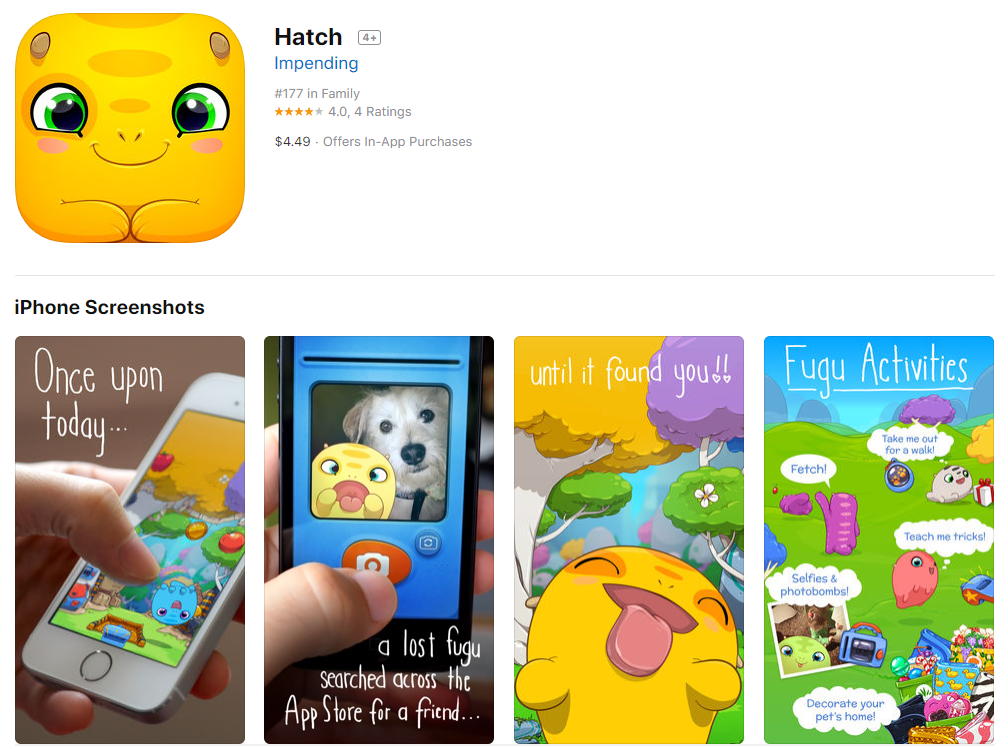
Research and Understand Your Users
You don’t have an app business without users.
Obviously, it’s pretty important to place them at the forefront of your marketing research.
App marketing can be expensive, and never more so than when you are spending your budget blindly.
Make the effort to identify and understand the audience who are most likely to find value in your app to ensure that you are spending your money wisely.
To optimize your creative collateral and marketing spend, you need to know the following things about your customers:
📱 Age
📱 Location
📱 Interests and hobbies
📱 Online presence (where they hang out on the internet)
📱 Devices used to download and use apps
📱 Income
Knowing these details will help you to put together several key user personas that will form the crux of your outreach techniques and strategies. You might even be surprised to find potential customers in niche groups you hadn’t ever considered! Getting this stage right is the difference between strong market traction and a total flop upon launch, so don’t skip this step.

Conduct Competitor Marketing Research
As we have already mentioned, it’s important to know your enemy when you are launching an app marketing.
The more competitors you have in the app market, the better.
It’s counter-intuitive at first.
But, the more competitors you have, the more opportunities for insightful market research you have access to.
Don’t even worry if you have huge and highly successful competitors, either.
Think about it: successful apps have probably poured thousands of dollars into conducting their own market research, so why not observe their marketing materials and re-purpose them for your own gains?
You might not have a huge budget to spend on your own research, but you can easily spend some time closely observing your competitors gain valuable insights.
There are many ways you can observe your competitors.
For instance, check out Facebook to see what ads your competitors are currently running, take a look at SEMRush or Ahrefs to see how they are doing from an SEO standpoint, and see how their social media is doing via Social Blade. Or just simply look at their website.
You can certainly take inspiration from the way your competitors are targeting customers and the messaging they are using.
Here are a few things you need to know about your competitors.
Again, a spreadsheet is your friend for this task:
📱 Where they are advertising.
📱 Who they are advertising to.
📱 The mediums they use and the type of imagery.
📱 Customer feedback and reviews.
📱 The features they promote the most.
📱 The emotions they play on the most.
📱 What doesn’t seem to be working for your competitors.
Gathering these insights from your top competitors can get you ahead on your app marketing plan in a matter of hours.
Make sure you aren’t copying your competitors, though.
It’s okay to take inspiration from your competitors. But always add your own spin to your marketing communications and strategies. Otherwise, you will find yourself in serious legal trouble.
Your business is different.
Think about how you can add your own story, benefits, and defining purpose into the marketing angles and strategies that you create.
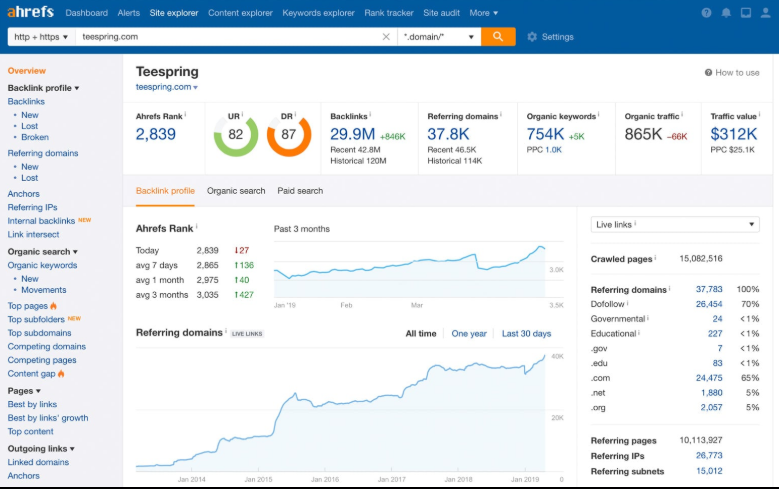
8 Effective Pre-Launch Marketing Strategies
It’s time to move on to pre-launch marketing tactics once your market research is complete.
Let’s take a look at 8 of the most effective pre-launch strategies available for implementation today.
Communicate Your ‘Aha’ Moment (AKA Value)
What on earth is an ‘aha’ moment?
You have had many ‘aha’ moments in your life, whether you know it or not.
An ‘aha’ moment is basically the trigger that flicks the ‘off’ switch to ‘on’.

It’s the precise moment in time when we firmly grasp the concept, benefit, and value of an app that we just can’t help but enthusiastically tell our friends and colleagues about it immediately.
Remember the first time you realized that you could download an app that turned your first iPhone into a torch? Or the very first time you booked a cab or hotel room without needing to call anyone? Or the time you used an app to find out what song was playing on the radio?
Of course, you told your friends about all of these apps at one point or another!
It’s one of the primary reasons each of these apps has grown enormously.
These are exactly the type of moments you want to inspire in your customers with your marketing strategies.
You may already have an idea of what it is about your app that makes your product truly unique. That’s the quality that is going to make user acquisition one bit easier.
So, what are some of the ways you can communicate this ‘Aha’ moment most effectively?
There are a ton of possibilities! For instance:
✅ If your app saves customers time and energy processing real-estate contracts, then an infographic may be an effective way to demonstrate those benefits.
✅ A video highlight reel may be the most effective way to show users how fun an app-based game is.
✅ An onboarding sequence or tutorial demonstrating an app’s functionality may be the best solution for many other products.
There are certainly many options to communicate your app’s unique ‘aha’ moment. It’s ultimately going to be dependent on the functionalities that your app does – so a ‘one size fits all’ solution certainly doesn’t exist.
Create a Pitch Deck and Press Release
Armed with your customer and competitor research, you now know exactly what makes your app super attractive to download.
So, the next step is to pull that all together to create a snappy and easy-to-absorb information pack to send out to prospective users and business partners.
The simplest way to do this is to create a pitch deck presentation that communicates the following aspects of your business:
📱 Vision statement:
What are the core beliefs and top priorities of your app-based technology business?
📱 Value proposition:
What features and functions give your app value?
📱 What problems are you addressing:
How does your app benefit users?
📱 What is your app’s proposed solution:
How does your app go about solving these problems for customers?
📱 How it works:
A simple overview of how your users will interact with your app.
📱 Launch date:
An estimated launch date that you expect your app to be available.
📱 Call to action:
What do you want your reader/listener to do after reading your pitch deck? Do you want the reader to pre-order your app? Schedule a demonstration or in-depth discussion? Do you want the reader to take advantage of an early-access deal?

The idea of a pitch deck is to keep it short and sweet.
It’s unlikely that your audience is willing to read a 50 page manifesto about your product. You simply want to spark interest, curiosity, and attention with your pitch deck. Sticking to 8-12 slides with minimal text and graphics is a great rule of thumb.
Make sure that you include screenshots of your app (or just concept artwork if you are in the very early stages of design).
Canva is a great tool for easily creating short pitch deck like presentations.
Alternatively, marketplaces like Dribbble, Fiverr and Upwork are perfect if you would prefer to hire an expert to create a pitch deck for you.
Create a PR Contact List
You now have a pitch deck.
But how do you get it in front of your potential customers, partners or industry influencers?
The first thing to do is to start collecting the contact information of relevant industry experts, market leaders and influencers.

Compile a list of as many relevant contacts in the following areas:
📱 Industry leaders
📱 Relevant businesses
📱 Magazines and publications
📱 Online blogs
📱 Podcasts
📱 Television
📱 YouTube-based app reviewers
📱 Event planners
📱 Journalists
After you have an adequate list of contacts, it’s time to think about how you would like to send your pitch deck out to them.
Simply attaching your pitch deck to an email isn’t always the best solution.
It’s best to communicate and interact in a way that your individual contacts are likely to be most receptive.
Depending on the contact, you may decide it’s best to:
Call the contact individually.
Post a printout.
Organise a keynote or event speech.
Message on social media like LinkedIn.
Send an email.
Whichever method that you choose to deliver your pitch deck to your contacts, don’t forget to follow up afterwards!
Create a Pre Launch App Landing Page or Website
At the pre-launch marketing level, you won’t have a finished app ready to download.
So, where will you send individuals or businesses that have viewed your outreach activities?
A landing page is an answer to this problem.
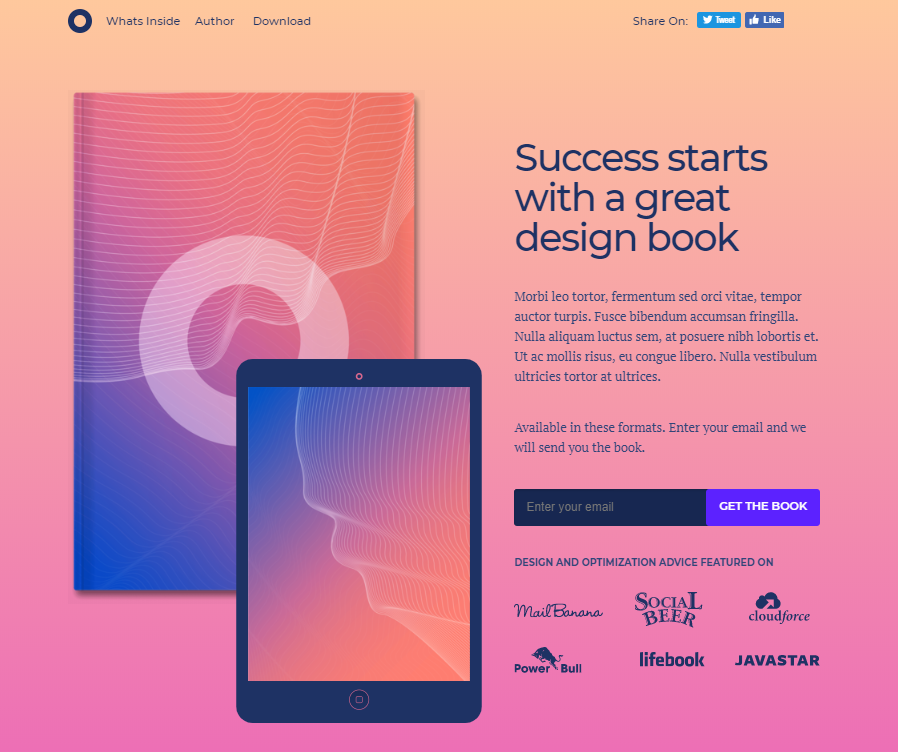
A landing page is just a web-page that your users click on as a result of a call to action within your marketing collateral.
For instance, on your pitch deck, you might decide to have a link to ‘sign up for early app access’. If the reader clicks on this link, a web-page will then appear with an email opt-in form. This is what is commonly referred to as a landing page.
A landing page serves one primary function; it’s a step towards creating a relationship with a potential user by securing further engagement.
The objective of a landing page is usually to obtain the reader’s email address or phone number so that future engagement is possible. In the context of pre-launch app marketing, it means that you can utilize a landing page to collect the contact details of interested users and notify them as soon as your app has been released on the app store. A landing page can therefore convert the audience your pre-launch mobile app marketing strategy has reached into app users in the future.
An effective way of capturing the contact details of your readers is to give a pre launch offer an exclusive deal if they sign up early for your app. For situations where an exclusive deal is not possible, it should just be enough to promise users a notification when the app has been launched.
An effective pre launch app landing page should:
✅ Showcase the primary benefits and value of your app.
✅ Entice readers with your app designs.
✅ Display customer reviews or testimonials.
✅ Prominently highlight a clear call to action.
If you are not sure how to create your landing page, tools like Unbounce will let you easily create multiple landing page variations to test variations and learn which messaging or format works best for your product.
Remember that landing pages using videos can increase conversion by 86%, so it’s a good idea to include one in at least one of the variations you build.
It’s highly recommended to create a pre launch app landing page for your marketing.
It’s an invaluable training ground before implementing post-launch marketing strategies as you will gain a better idea of what works to capture the attention of your audience early on.
To learn more about what to include and what not to include on your app’s landing page, take a look at this article by Unbounce that critiques dozens of landing pages.
Pre-order Downloads
Did you know that the Apple App Store and Google Play Store provides the option to pre-order and pre-register apps?
You don’t have to wait until your official launch date to secure app downloads. It’s now possible to launch with hundreds of thousands of app downloads the very day your app is released.
Then, when your app launches it will automatically be downloaded onto the devices of anyone who choose to pre-order.
It’s worthwhile to consider adding a link to pre-order your app on your landing page!
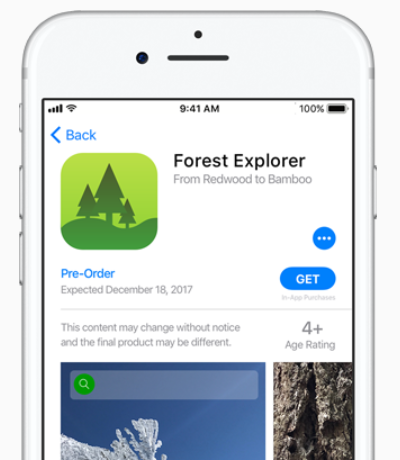
Early Adopter Promo-codes and Discounts
A great way of enticing the first wave of users is to give out pre launch offers like discounts, freebies and special deals like lifetime membership. Email lists and Facebook groups are both great ways of gathering exclusive groups together.
You can then send members of these groups an exclusive pre launch offer or price through a deep link once your app is launched.
That will take the user directly to a private transaction screen with a discount or offer pre-loaded.
Pre-Launch Content Marketing
Content marketing is the act of providing valuable resources to your users while simultaneously advertising your product and gathering contact details for re-engagement.
Each key user persona in your target demographic has a unique set of interests or problems they are actively looking to solve.
For instance, think about a person who might be interested in downloading a cooking app. It’s highly probable to assume that they are also searching for recipes, kitchenware and other culinary related content online.
An owner of a cooking app can start creating branded social media or website content that ties into those interests or problems. This content can then be found by potential users and consumed. A relationship can be formed with the audience when they follow your business’s social media account or through an email opt-in (like a cooking newsletter or free recipe book).

Both methods give your business an opportunity to reengage with users in the future which can potentially result in an app install.
Content marketing has to be genuinely useful or entertaining for it to work. So, it’s definitely worthwhile to invest the effort to create quality content.
Research has revealed that 71% of people are turned off by content that feels like a sales pitch. Do sneak in a few subtle pointers towards your product, but don’t create content that isn’t authentically aimed at providing the audience with value.
Content marketing generates over three times as many leads as outbound marketing (while costing 62% less). If you invest in ten high-quality articles, videos, or infographics you can potentially receive some serious return on investment.
Buffer is a great example of content marketing done well.
Buffer predominantly utilized guest blogging to achieve their first 100,000 users proving that the method works well.
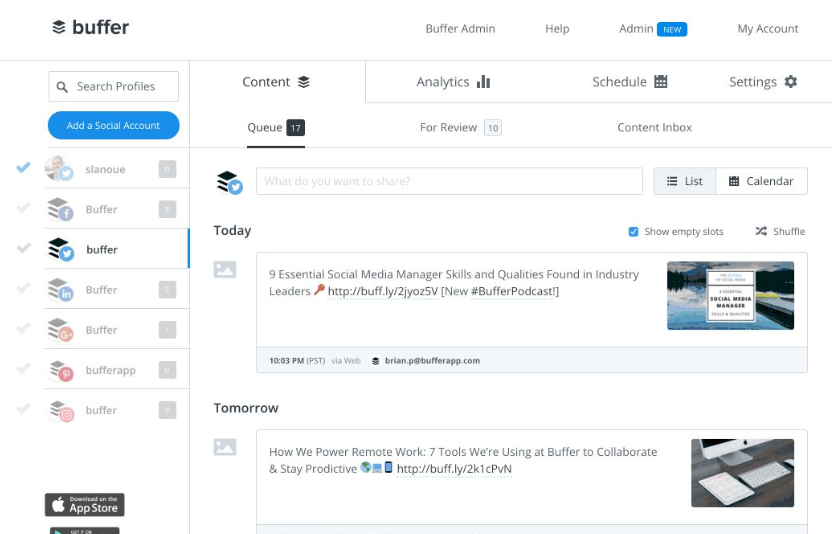
Collect Early User Reviews or Testimonials
Your final pre-launch strategy is to offer exclusive sneak previews to businesses, influencers, and reviewers.
There are three reasons that this tactic works as well as it does:
📱 You Will Receive Vital Feedback.
Getting your app in front of industry leaders and potential customers can provide an opportunity to gather feedback from the people that are most likely to use your product.
This can result in fantastic social proof in the form of reviews, endorsements and testimonials. These can all be used in your pitch deck, landing page, email drip campaigns, and more.
It’s far easier to launch your app with a genuine endorsement as it is an effective persuasion technique to achieve installs.
📱 Your App Will Be User-Tested.
Provided that you are in the final stages of development, your app will get some real-world use.
By letting real-life users try out your product or interactive prototype just before it officially launches, you will gain the advantage of fixing last-minute bugs and issues with overall UX.
Minor niggles can then be eliminated before your app officially launches. Nothing is worse than releasing an app that still has some teething issues in terms of performance or design!
📱 You Can Create Genuine Relationships.
There is a strong opportunity to create relationships with influential leaders if your app directly serves a specific type of business or industry.
For example, if your app is an artificial intelligence based receptionist for medical practices, it may be beneficial to reach out to local medical clinics to establish an early rapport. Perhaps an exclusive trial could be offered in exchange for the opportunity to build a case study. Who knows, maybe this medical clinic may even refer your product to other clinics at industry events.
Genuine relationships can definitely create some legitimate word-of-mouth marketing. It’s easy to forget that technology products don’t always have to rely on digital marketing at the end of the day!
Begin the process of creating relationships by approaching potential contacts with a clear intention. Whether it’s saving them time, money or just a chance to provide feedback on a new product that can improve their industry – whatever it is, it needs to pique their interest.
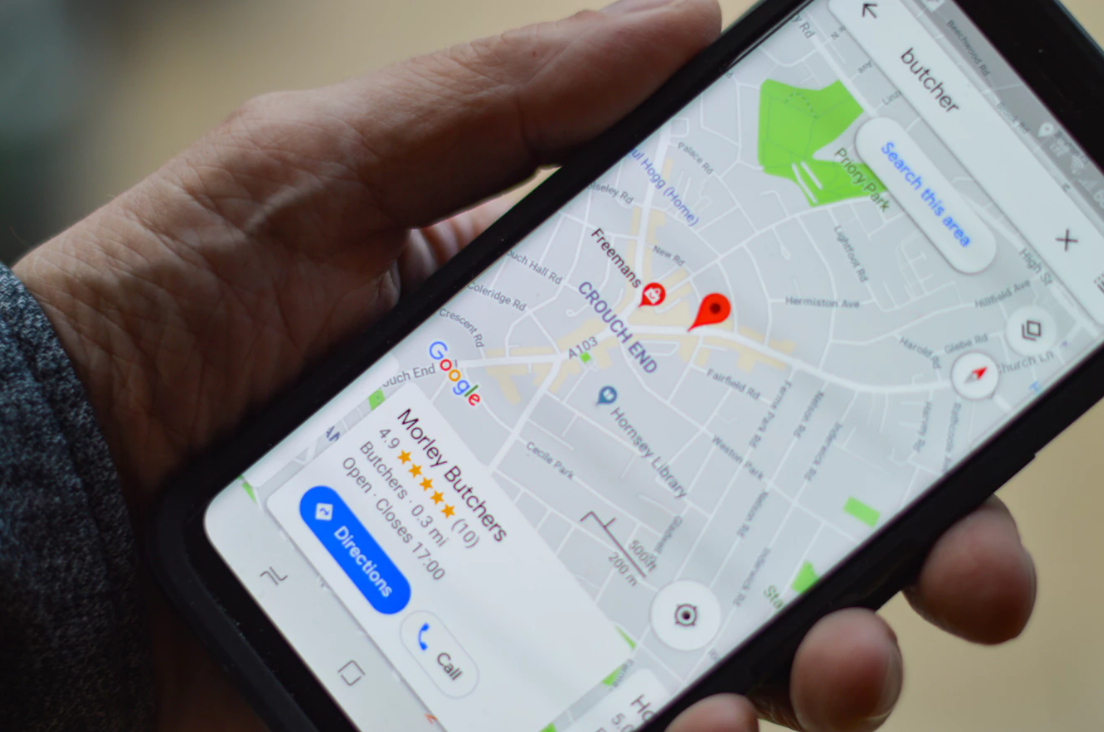
Post-Launch Marketing Strategies
So, you did it!
You developed an app and it’s out there ready to be used by the general public.
Let’s now discuss some of the app marketing strategies that can be deployed post-launch!
Search Engine Optimisation and Search Engine Marketing
Websites are still an important part of digital marketing strategy.
They provide a home for businesses, establish credibility and can also attract thousands of users in organic and paid traffic.
Websites can also create or further enhance the relationship between your target audience and your app business. For instance, creating a helpful blog, community forum or support centre can help to keep users engaged well into the future.
But this raises the question – how does your target audience find your business or content online?
9 times out of 10, it’s through a search engine like Google.

Search engines have indexed more than 130 trillion pages on the internet as of 2018.
A search engine works by matching the most suitable web-pages to the most relevant search queries. For instance, when ‘Melbourne App Developer’ is searched on Google, Appetiser’s website is displayed as it is the most relevant result.
Your aim with SEO is to make sure that your website is the result that the search engine determines to be the most appropriate result for the search queries related to your business or industry.
It can be tricky to rank against the millions of other web-pages fighting for the top search result for each keyword.
Mastering these four basic pillars of SEO will help to start you off in the right direction:
📱 Authority.
Authority is the measure of trust, which is the most important thing when it comes to search ranking position.
Search engine algorithms have developed a trick for gauging whether a website can be considered an authority in their industry; if many websites are referring to one particular website, it’s a good indication that it has a high level of authority within that community.
One of the best ways of establishing authority is to develop links from quality websites pointing to your site. This will inform the search engine that your site has quality resources and content that other related websites trust.
📱 Relevance.
Relevance is the measure of a websites content quality.
Search engines measure the quality of a website’s content by using natural language learning and artificial intelligence at a mass scale.
High relevance websites contain content that is well-written, factual, creative and pertinent. For instance, a search engine will understand your website is a mobile app strategy game if it contains the corresponding and relevant keywords.
User experience refers to a website’s ease of use.
For instance, a search engine will negatively rank a website if it doesn’t display correctly on devices, takes a long time to load and is difficult to navigate or read.
A search engine will instead favour a website that doesn’t experience these problems; thus providing the user with the best possible search result.
📱 Site Health.
Site health is a granular analysis of your website.
It deals with the smaller details of your website such as broken links and metadata (like page descriptions and image ALT tags).
A healthy website resembles a well filled out form – there is no missing information or any questions unanswered.

As we have already covered in the content marketing section, having one successful article can create thousands of qualified leads for your business. But, it’s a lot of work to get to this point.
Just remember that Rome wasn’t built in a day.
It takes time to create a high-quality website and capture organic traffic, but it’s definitely pivotal for long term success.
Thankfully there are also ways to get results faster than search engine optimisation.
Search engine marketing (SEM) allows advertisements to be placed at the top or bottom of organic search results for keywords businesses select.
Services like Google Adwords allow marketers to bid on specific keywords like ‘roof cleaning’. The business who is willing to bid the most amount of money on a keyword gains the ability to overlay their advertisement for their website at the top of the search results each time ‘roof cleaning’ is searched.
The business is then charged the amount of money they bid to secure the ‘roof cleaning’ keyword each time their advertisement is clicked by a user.
Some keywords have become extremely expensive depending on the amount of demand there is.
But it’s for good reason – it’s a fast and reliable way to get people downloading your app.
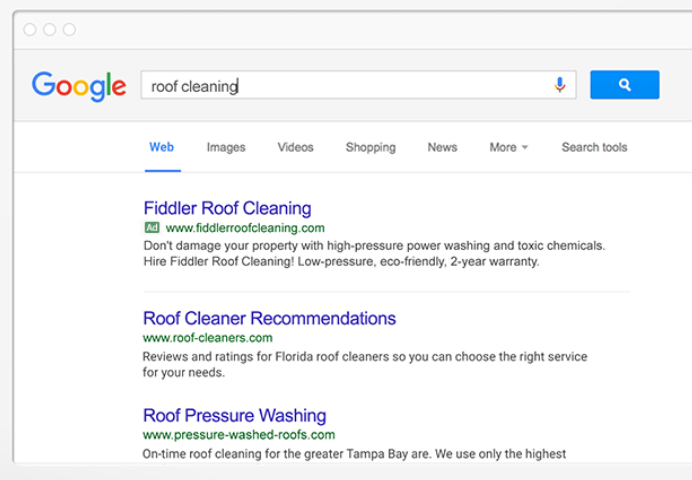
That being said, don’t just focus your efforts on Google where over-saturated markets have raised certain keywords to astronomical amounts.
Search engines like Microsoft Bing and DuckDuckGo can offer far more affordable prices at the expense of less traffic.
App Store Optimization and Advertisement
App store optimization (ASO) is one of the key ways to increase the number of people who can find your app.
ASO works in the same way as to how a search engine matches the most relevant website to a user’s search query.
The only difference is that ASO works purely inside the Google Play Store or Apple App Store.
For example, a user will be shown a list of multiple meditation apps when they search for the keyword ‘meditation app’ in the app store search bar.
It’s your goal to have your app listed as high as possible on the search result listings for relevant keywords. Optimising your app’s ASO will help your app climb to the very top of the search result rankings for relevant search terms.
Apps which consistently appear at the top of the search results are downloaded more frequently.
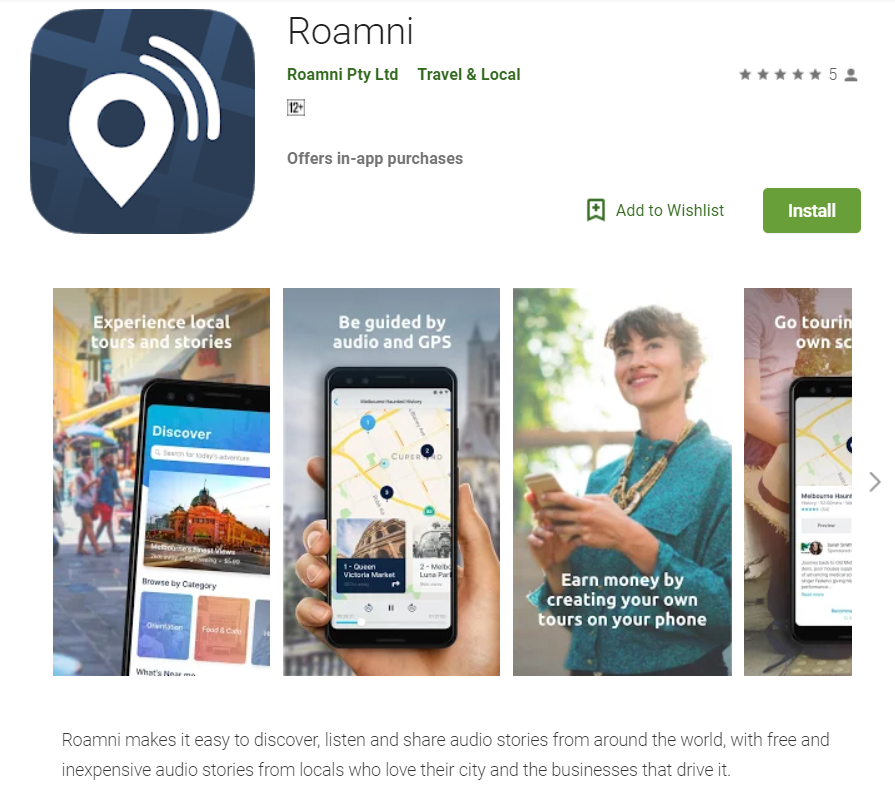 Think of it this way; when you Google a search term, do you click on one of the first three results or the last one at the bottom of the page?
Think of it this way; when you Google a search term, do you click on one of the first three results or the last one at the bottom of the page?
The majority of people click on the first result.
That is the importance and effectiveness of app store optimization.
Up to 63% of apps are discovered through app store search sessions, so getting this right can send a whole lot of traffic your way (for free!).
Improve your app store ranking by:
📱 Placing a keyword in your app’s title.
📱 Optimizing keywords in your app description.
📱 Adding a strong app subtitle.
📱 Adding quality screenshots and app images.
📱 Creating an attractive app icon.
📱 Gathering positive app store reviews.
📱 Adding relevant keywords and tags.
It is also worth noting that the Apple App Store and Google Play Store allow developers to advertise apps at the top of the search result rankings too.
So, if a user searches for a keyword such as ‘photo filters’, your app will rank at the very top of the search rankings as a sponsored post.
You will be charged each time your app store listing is clicked. This can be an effective way of increasing downloads quickly.
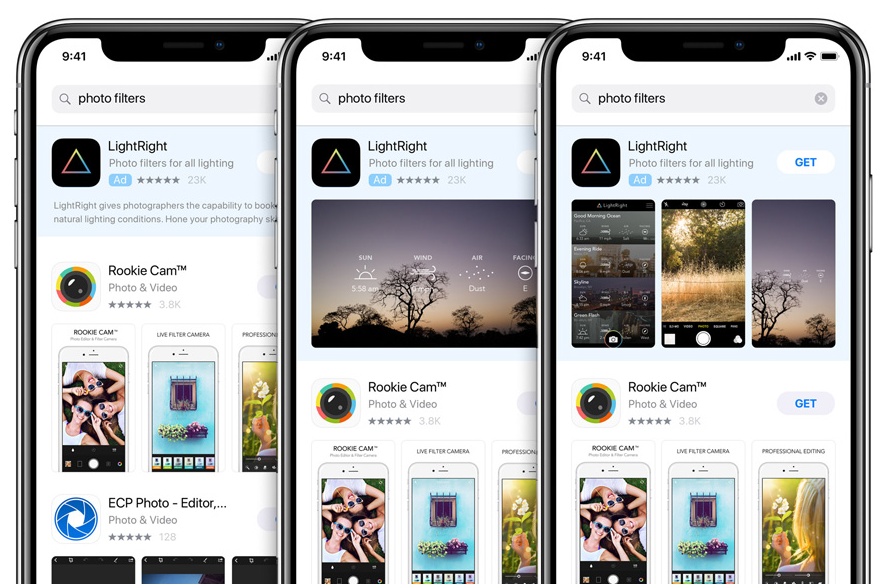
Post-Launch Content Marketing
As we covered in the pre-launch section of this article, content marketing is the practice of providing interesting and valuable content while building your brand’s presence.
Content marketing is an effective strategy that can also be used post product launch and well into the future.
As we mentioned before, you will need to know exactly what your audience is looking for online to have a successful content marketing plan.
Content marketing can take many forms including:
📱 Articles and blogs
📱 Infographics
📱 Videos, webinars, and web episodes
📱 Podcasts
📱 Statistics and industry reports
📱 Free White Papers, guides, and e-books
📱 Newsletters

Content marketing is one of the biggest drivers of organic search traffic through search engine optimisation (SEO).
Creating content that readers love has the power to turn thousands of search engine users with no prior knowledge of your app into first-time users.
That’s why 90% of marketers use blogs to achieve their goals: content works brilliantly.
By working to create a constant level of engagement, you will strengthen the relationship between your product and your audience. Your business will increasingly earn awareness, trust and a sense of expertise as a result.
Content marketing is not a guaranteed win though.
It can take months for search engines to recognize your content as being useful or highly valuable. For this reason, it’s beneficial to enlist the help of an SEO strategist to attract the right audience and make sure it’s as visible as possible.
Unique site traffic is generally 7.8 times higher for content marketing leaders.
It’s certainly worth the investment.
Social Media Marketing

The key benefit of using social media advertisements for your app marketing campaign is the massive amount of qualified people you have the ability to target. It goes without saying that social media platforms have huge amounts of users, and virtually every social media platform is happy to sell you their customers attention for a price.
‘Sponsored posts’ are a favoured method of social ads, as they blend seamlessly into a user’s feed.
The concept is pretty straightforward: you pay to get your content seen by the demographics of your choosing.
The great thing about social platforms are the advanced analytic tools they provide. You can go into great detail when picking your target audience to ensure every penny of your marketing budget isn’t wasted on people who aren’t likely to download your app.
It’s even possible to re-target users who have previously shown interest in your product but have not decided to install it yet. A second or third round of advertisements may just tip them over the edge to take action and install your app.
One way of increasing the success of your ads is to localize your content. 72.4% of global consumers understandably prefer to use their own native language. Therefore, it’s important to implement localisation tactics into your social media marketing to really increase your potential market and global appeal.
Influencer Marketing

Influencer marketing is rapidly growing in popularity, and it’s extremely compatible with mobile app marketing.
The key to influencer marketing success is the existing relationship between an influencer and the audience they have been able to amass.
Working with an influencer can instantly build awareness and trust in your product with a segment of your target audience.
As of 2018, 56% of consumers said that they’re more influenced by their friends and peers than strangers. Having a well-known and trusted figure vouch for your app can quickly establish an influencer similar to that of a friend (especially at the micro-scale).
Success will really depend on choosing the right influencer.
You have two primary influencer choices:
📱 Macro influencer:
A macro influencer is a social media account with upwards of 100,000 followers.
📱 Micro influencer:
Micro influencers are social media accounts with between 1,000 and 100,000 followers.
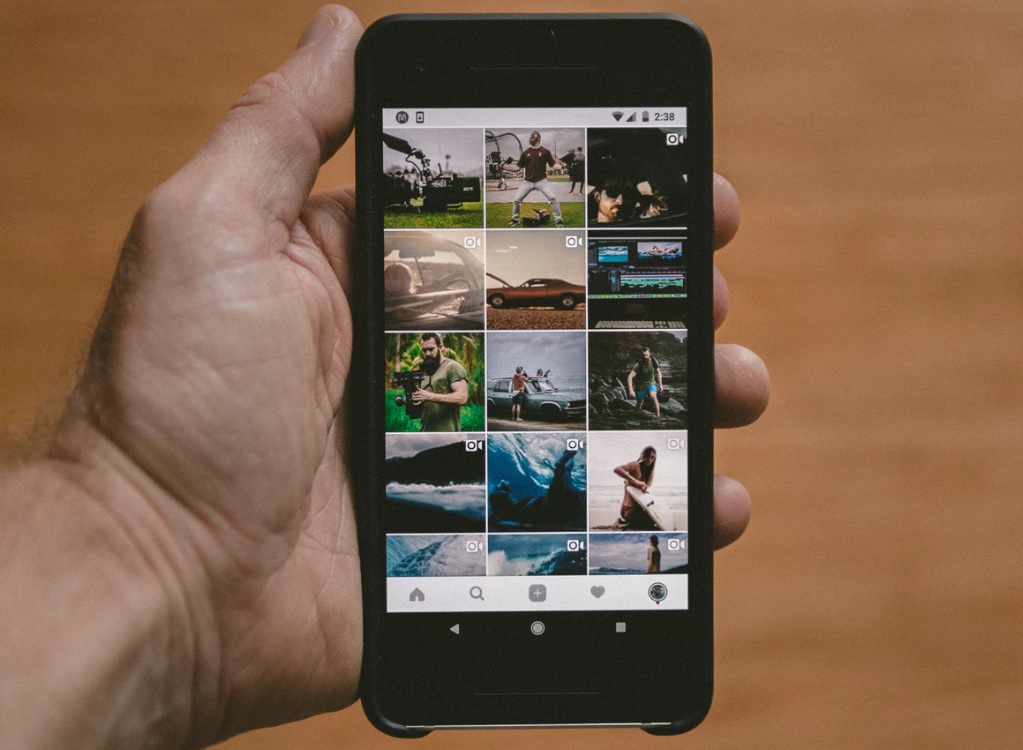
Speaking in generalities, macro influencers are better suited to large budget campaigns where awareness is the primary objective. On the other hand, micro influencers are better suited for smaller budgets with conversion orientated objectives.
Depending on who you select, influencer marketing can be a fairly cheap way of advertising your app. It’s a good idea to test out multiple influencers to see who achieves the best results for your app. Getting these relationships right can be the key to accessing a whole new audience of potential customers.
Events
It’s not all about digital when it comes to mobile app marketing, and sometimes one-on-one human interactions can lead to massive success.
Consider throwing a launch party or media day for your app. You might find that using traditional marketing resonates with journalists and industry leaders much more effectively than any other marketing strategy. Before the event, create a QR code business card that can instantly direct attendees to your app’s download page, making it easier to convert in-person connections into active users.
If you choose to give this a go, start by taking your product to a group that will benefit from your app.
For instance, an online fashion boutique app could approach a potential supplier and ask them to host your app launch event in store. The event could feature free personal styling advice to attract customers and then give away sample products to promote your own business or app.
The possibilities are endless!

Create a Viral Loop
Upon launch, it’s expected that you will spend a lot of money on marketing strategies to get your app out there.
But no entrepreneur aims at pouring the same amount of resources into converting their target audience each and every year with no improvement.
A smart way of continuing your app’s momentum is to turn your users into your very own viral marketing team. ‘Word of mouth’ virality can be a much more resource-efficient way of achieving sustainable long term growth.
A viral loop is essentially a cycle that follows the following steps:
2️⃣ The user installs the app.
3️⃣ A desire to share the app with a new user is created.
4️⃣ The user then shares the app with a new user.
5️⃣ A new user becomes aware of the app.
⭕ Rinse and repeat.
A viral loop can be a very powerful tool in the age of social media.
The type of viral loop you can create is very specific to the type of app that you are creating.
A cloud-based storage app, for example, may consider offering additional storage space in return for referrals. A lift-sharing app could give away a free ride to anyone who invites their friends to join via social media.
Viral loops also work well combined with FOMO (fear of missing out). Vero used this method to successfully gain hundreds of thousands of new users by offering free sign-ups to their first million customers. However, it’s important to also note that they didn’t offer the value they promised to deliver. It goes to show that clever marketing alone isn’t enough to sustain an app’s growth.
Brainstorm a few app launch ideas for your own viral loop.
There are so many ways of using this technique and it’s important to find the correct one for your business.
Mobile App Awards
It may seem unconventional, but using mobile app award events and competitions can be a great way of marketing your app.
Your app has the potential to be seen by thousands of new potential users, as well as journalists and industry leaders that have to power to turn your product into the next big thing.
But only if you rank high in these competitions.
There are lots of startup, mobile app, technology, and design awards up for grabs each year. A good place to start is to check out the Davey Awards and the Weebly Awards.
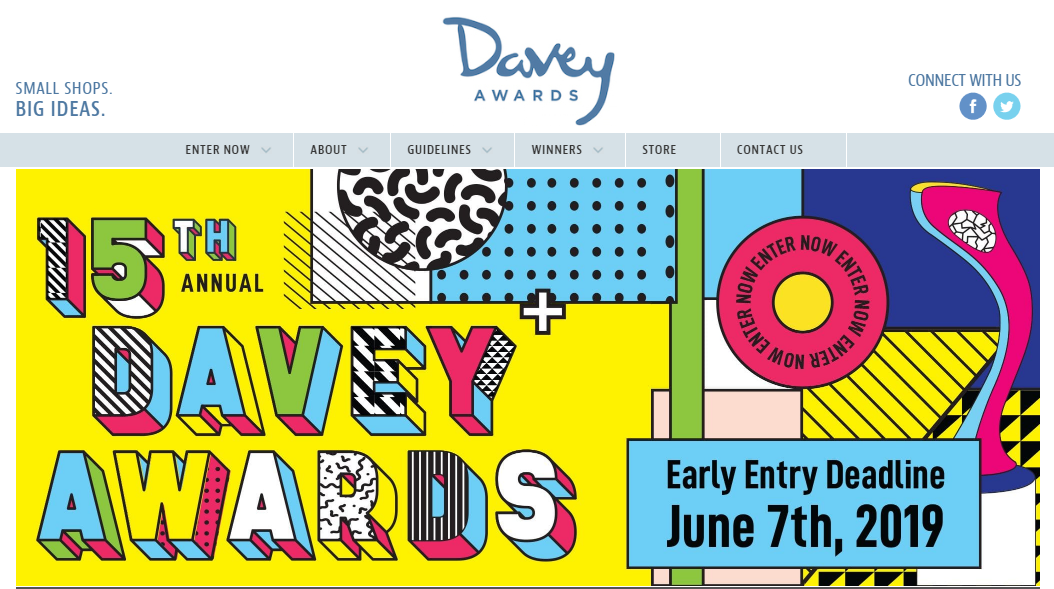
Tracking Marketing Metrics And Results
There are several pre and post-launch marketing channels to invest your time and money in.
But while you are spending all that cash, how are you to know whether or not your efforts are paying off?
Are there more effective ways to spend marketing resources? Can your successful tactics become even more successful?
If you don’t track your marketing progress you could be pouring your capital into the strategies that are delivering very little, while underutilizing those which are successful.
Remember that great marketing is a combination of science and creativity.
The analytical side is just as important as the creative aspects of app marketing. Thankfully technology has really improved to the point where it’s easy to integrate analytics into creative content.
But now it’s increasingly important to track the right metrics.
App marketing isn’t purely about the number of people that clicked on to your social media advertisement or Google Adwords campaign.
It’s also about the analysis of how those users interacted within your app.
It’s better to pay a higher amount of money to reach the attention of ten people who are highly likely to continue using your app for years than to spend less money to reach a thousand users who uninstall your app after a single use.
Without users your app is pointless. That’s why the ultimate goal of app marketing is to achieve retention, not just downloads.
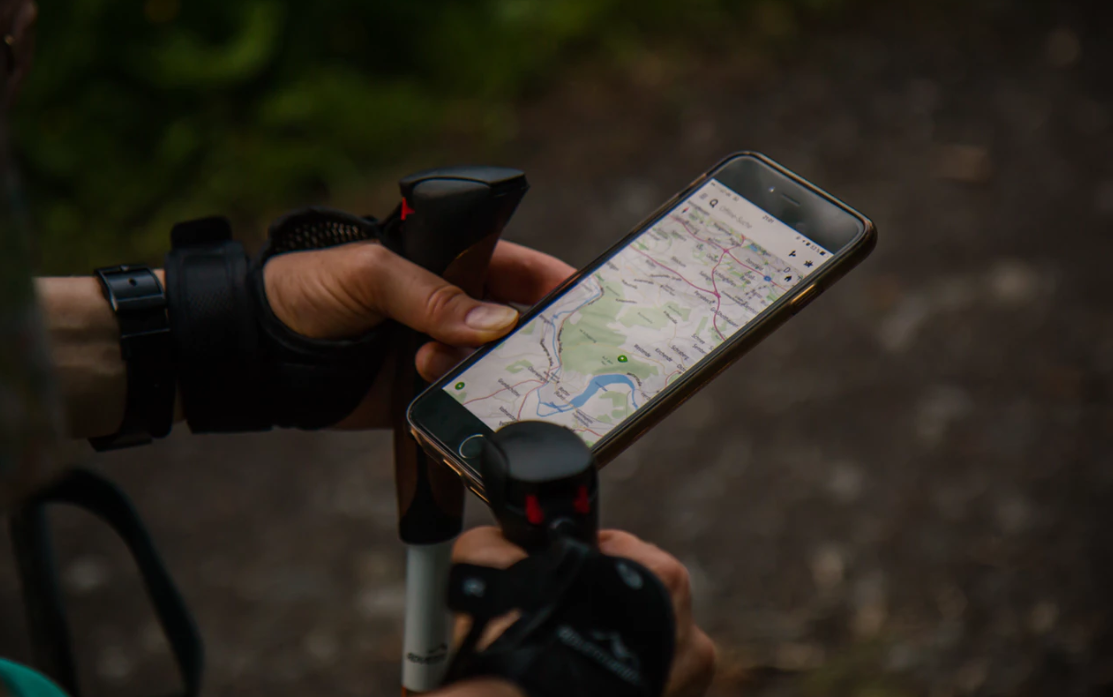
The basic metrics that you should be tracking within your app marketing strategy are as follows:
📱 CPM (cost per mille):
CPM is alternatively known as ‘Cost Per Thousand’. This important metric tells you the amount of money 1,000 ad impressions will cost you. CPM is the most common way to price web ads.
📱Traffic Source:
Traffic Source allows you to see where your users find about your app. This is a useful tool for seeing which of your marketing campaigns are engaging audiences and which aren’t worth investing in.
📱 Click Through Rate:
Click through rate is a percentage that demonstrates how many users are clicking through to landing pages, links, and any other locations from marketing collateral.
📱 User Demographics:
User demographics are important psycho-graphics including age, gender, marital status, income and any other information such as values or spending habits. If you want to target your audience effectively you need to understand the common patterns of your demographic.
📱 Number of Downloads:
The number of downloads is the simplest method of determining campaign success. You will know your communication is persuasive if it’s achieving a large number of downloads.
📱 Devices:
It’s helpful to know which devices users are downloading your app onto. This can help you narrow down your marketing campaign targeting to only include individuals who use Android or iOS devices.
📱 Cost Per Download:
Cost per download is calculated by dividing your total marketing expenditure by the total number of downloads. Data from Statista states that as of February 2017, the global average cost per install for iOS apps was $0.44 and $0.86 for Android apps.
📱 On-boarding Sequence:
Tracking the number of users who complete your sign-up process can be very useful. An onboarding sequence can track users creating an account, uploading their first video, or creating an invoice for the first time. The way you use this metric will depend heavily on the type of app you have created.
📱 Active Users:
Tracking your daily and monthly users can tell you who is using your product most frequently. This can help to optimize your target users or indicate that your app needs to engage with users in more ways.
📱 Session Duration:
Session duration is the amount of time your users are active on your app per session. If users aren’t spending much time in the app, perhaps it’s worth looking at some ways to increase session retention.
📱 Uninstall Rate:
An uninstall rate is the percentage of users who delete your app from their device. Statistics from June 2018 state that the average uninstall rate was 28% after 30 days. Knowing the uninstall percentage will help you to see where users are typically dropping off and indicate how you can patch up those holes.
📱 Free to Paid Conversion Percentage:
This metric tracks the number of free users who later become paid users. This percentage will vary between apps, but to give you something to aim for, Slack manages an incredible 30% conversion percentage from free to subscribing users.
📱 App Rating:
The Google Play Store and Apple App Store allow users to give an app a rating out of five. A high app rating is often the determining factor for potential users when deciding whether to download your app or not.
📱 Social Shares:
The amount of time an app is shared or discussed on social media. The more times your product is shared or discussed on social media, the more opportunities there are to attract new users to your app.

For a deeper analysis of marketing metrics and analytic tools, take a read of our article on The Most Powerful Mobile App Analytic Tools & Which One to Use.
Conclusion
Technology. Design. Marketing.
The best technology businesses in the world brilliantly harmonize these three ingredients together.
But unfortunately, we have observed that many entrepreneurs in the app industry are lacking an emphasis on marketing. It’s easy to become fixated on the design process or even just to fall into the common belief that nothing can be done until an actual product has been launched.
We hope that our article has demonstrated that marketing is a before and after launch activity.
There really is no need to wait until an app has been released to start spreading the word. In many cases, a pre-launch app marketing strategy has been pivotal to product success.
It’s no longer enough to simply have an amazing app in today’s competitive market. To make an impact you really need to accompany your app launch ideas with an equally great marketing strategy.
And with 60 billion dollars generated by apps in 2017, there’s plenty of proof that your business has a lot to gain by getting these strategies right.
Marketing can be a fun and creative activity.
But don’t make the mistake of forgetting the importance of tracking your success with analytic tools. It’s a lot of hard work – we know – but you don’t need to take the entire weight on your shoulders alone.
We are more than happy to help!


